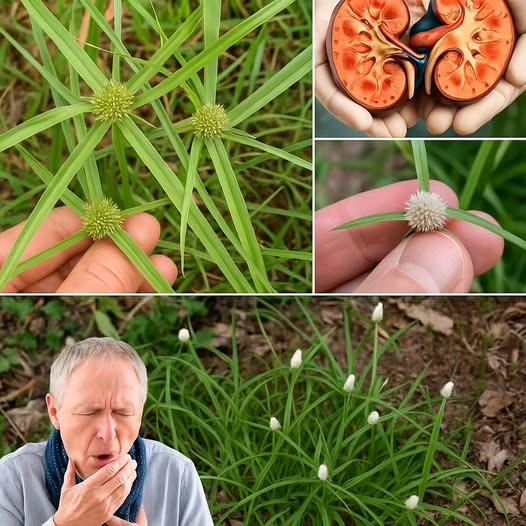

Kyllinga brevifolia: A Natural Remedy for Health and Wellness
Kyllinga brevifolia, commonly known as green kyllinga or shortleaf spikesedge, is a low-growing, grass-like plant often found in moist or damp environments across Asia, Africa, and parts of the Americas. Though frequently considered a weed in lawns and gardens, this resilient plant has a long history of use in traditional medicine. In recent years, researchers and herbal enthusiasts alike have begun to take a closer look at its potential health benefits and role in natural wellness practices.
Botanical Overview
Kyllinga brevifolia belongs to the Cyperaceae family and is characterized by its slender, grass-like leaves and distinctive, round, green flower heads. It spreads rapidly through rhizomes and can quickly cover open ground, especially in wet or semi-aquatic areas. Despite its reputation as an invasive species, many traditional healers regard it as a powerful medicinal herb.
Traditional Uses in Herbal Medicine
In various regions, Kyllinga brevifolia has been used for centuries as a remedy for a wide range of ailments:
- Fever Reduction: One of the most common uses is as an antipyretic. A decoction made from the leaves and roots is traditionally used to reduce fever and cool the body, especially in tropical climates.
- Digestive Relief: The plant is known for its soothing effects on the digestive system. It’s often brewed as a mild tea to treat stomach pain, diarrhea, indigestion, and bloating. Its astringent properties help regulate bowel movements and improve gut health.
- Detoxification: In traditional detox regimens, Kyllinga brevifolia is used to purify the blood and support liver and kidney function. The roots, in particular, are boiled and consumed to encourage toxin elimination.
- Urinary Tract Infections (UTIs): Due to its diuretic and antimicrobial properties, herbalists recommend Kyllinga-based preparations to flush out the urinary tract and reduce inflammation caused by infections.
- Wound Healing: Crushed leaves are sometimes applied directly to minor cuts, insect bites, and wounds. The plant’s antibacterial and anti-inflammatory effects promote faster healing and reduce the risk of infection.
Pharmacological Properties
Scientific studies into Kyllinga brevifolia are still in the early stages, but preliminary findings are promising. The plant contains several bioactive compounds, including flavonoids, tannins, and alkaloids, which are known for their antioxidant and anti-inflammatory activity.
Some studies have also pointed to potential antimicrobial effects, particularly against E. coli and Staphylococcus aureus, which supports its traditional use in treating infections. Its antioxidant properties help combat oxidative stress, which is linked to aging and chronic diseases.
Modern Applications and Forms
Today, Kyllinga brevifolia is available in various forms for those who want to incorporate it into their wellness routine:
- Herbal Tea: Dried leaves can be steeped to make a soothing tea that supports digestion and detoxification.
- Tinctures and Extracts: Concentrated forms offer higher potency and longer shelf life, making them convenient for regular use.
- Topical Pastes: For skin conditions or wounds, the fresh plant can be ground into a paste and applied externally.
As always, those interested in using Kyllinga brevifolia therapeutically should consult a healthcare provider, especially if taking medications or dealing with chronic health conditions.
Conclusion
Kyllinga brevifolia may be small and often overlooked, but it holds great promise as a natural remedy for a variety of health issues. With roots in ancient herbal traditions and growing scientific interest, this humble plant stands as a testament to the power of nature in supporting human health and wellness. Whether used for digestive aid, fever relief, or skin healing, Kyllinga brevifolia reminds us that sometimes the most potent medicines come from the simplest sources.


